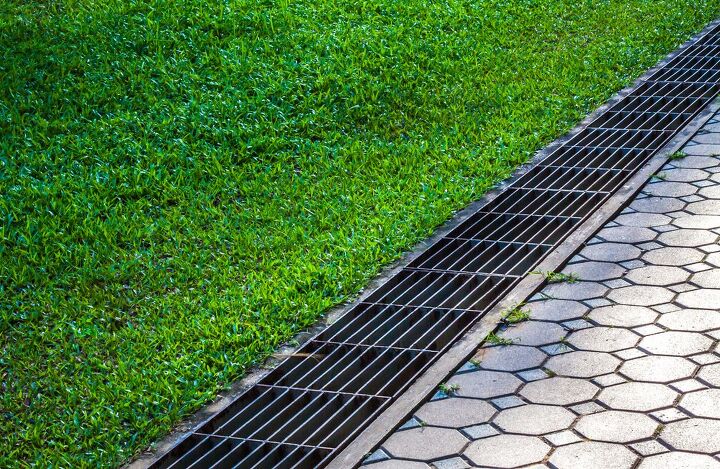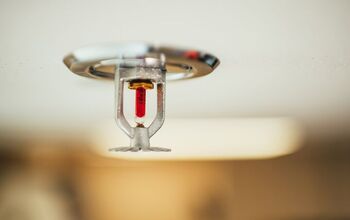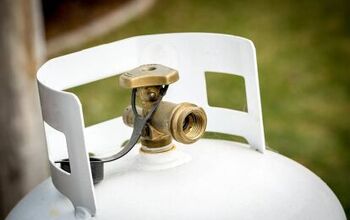4+ Types Of Drainage Systems (With Photos)

Drainage refers to the method of removing surface or sub-surface water from a particular area. Drainage systems are intended to dispose of wastewater as quickly as possible, while also preventing the gases from sewers and septic tanks from entering residential locations. Their main objective is to systemically collect and remove waste matter to preserve the healthy conditions in a residential or commercial setting.
These systems consist of all the piping on a private or public property that carries rainwater, sewage, and other liquid waste to the disposal location. Knowing the different types of drainage systems in your home can help when it comes to waterproofing your home and troubleshooting issues on your property. The four main types of residential draining systems include surface, subsurface, slope, and downspouts, and gutter systems.
Effectively gathering and dispersing of water runoff is crucial to water vegetation and prevent drowning. The collected water is also used to replenish the freshwater supply in your area. After all, the longer that water sits on a given surface, the more susceptible it becomes to contamination. Knowing the types of drainage systems will help you obtain a more comprehensive understanding of their specific roles and how they work together.
Do You Need to Hire a Plumber?
Get free, zero-commitment quotes from pro contractors near you.

1. Surface Drainage Systems
The purpose of a surface drainage system to prevent water from pooling or flooding on a property. These systems remove the excess water from the land’s surface via channels or ditches. In some cases, the surface of the ground may be graded or shape in order to create sloping to these channels.
The longer that water has to sit stagnant, the more susceptible it is to being contaminated by a variety of outside influences. While some water will undeniably be absorbed into the ground and surrounding foliage, a lack of surface drainage systems, incorrectly sloped yard, or heavy rainfall can cause problems. The major advantage to surface drainage systems is the fact that it reduces the time that water is ponded.
When the soil is saturated for a prolonged period of time, gas exchange is restricted in the root system and soil of the plants. This can result in nutrient loss in the soil, which can essentially destroy and potentially even kill crops. The four main types of surface drainage systems open drains, levees, grassed waterways, and humps and hollows. Oftentimes, utilizing both manufactured and natural elements can deliver the needed relief to an area where flooding is inevitable.
Open Drains
Open drains can be broken down even further into their three subgroups based on depth: shallow, medium depth, and large. Shallow open drains can easily be created using a hand shovel and are seldom deeper than a foot. Their main purpose is to help remove excess water in shallow depressions. While they are meant to direct water to larger streams or drains, a shallow open drain can only drain small areas and is more of a temporary solution.
Medium depth open drains, on the other hand, are usually between one foot a one meter deep and are best suited for flat areas. In most cases, an excavator is used to create these drains with a flat bottom and a V-shaped trench. These drains must feature a gradient that is steep enough to permit water to flow quickly without causing damage to the drain itself.
Finally, large open drains are usually wide and several meters deep. A scraper, bulldozer, or dragline excavator is typically used to create a large open drain. As their name suggests, they are best suited for excavating large volumes of water.
Levees
The purpose of levees is to keep surface runoff from gaining velocity while flowing to prevent the land from eroding. They are typically formed on land with a gradient, in which soil is removed to form the levees on the channel’s downslopes. Levees must follow the lay of a slope and the flow of water must be gentle to avoid landslips.
In ideal situations, levees must be spaced between 30 and 50 meters apart. It’s also important to note that a channel can erode quickly if the establishment of a grass cover is not accounted for after the creation of a levee.
Grassed Waterways
Grassed waterways are used to control the outflows from drains going down slopes to help avoid erosion. They are often shallow, narrow, and can only be used in areas where there is a dense stretch of grass. The shape and size of the grassed waterway will determine the amount of water that can be removed and the steepness of the slope in a grassed waterway surface drainage system.
Humps and Hollows
Humps and hollows are exactly what they sound like. Parallel humps are created in the surface, with hollows in between them. The purpose of the humps is to help shed excess moisture, which is then collected in the hollows that are essentially shallow surface drains. These two components work together to form a series of lateral surface drains.
From that point, the water is then discharged into headland drains. Spacing between humps will depend on the speed at which the water has to be removed, ranging from ten to twenty meters. The bigger the space between the humps, the slower the water will drain.
2. Subsurface Drainage Systems
Instead of being implemented on the surface, subsurface drainage systems are placed beneath the top layer of soil. Commonly referred to as French drains, this system removes excess water from the soil that has become waterlogged at the root level. When the roots of a tree or plant become waterlogged, they will start to rot and can eventually cause it to die.
Installing a subsurface drainage system involves digging deep underground ditches and pipes, as well as a large collector drain to pull the water from the pipes. Typically, a sump pump is also included to help push water through the pipes and away from the affected area.
French drains are very common in residential applications, as they redirect water away from homes and landscaping. They consist of a perforated pipe that is installed flat in a yard with a sloped trench that moves water runoff from the highest point at the beginning – usually near the foundation of a structure – to the lowest at the end. At this point, the water enters a cistern, sewer, or swale.
Point drains, which are the drains you find in the center of your shower floor, are technically another form of subsurface draining system. They require the floor to be sloped in all directions of the drain.
3. Slope Drainage Systems
Slope drainage systems are designed to allow water to flow away from a structure in a downward direction. Pipes are installed on an incline to naturally move the water down the slope.
As the installed pipes are anchored to the incline, they guide the water through and away. The pipes used may be steel, plastic, or concrete. They are also covered with a durable grate to keep animals and people from falling into it.
4. Downspouts and Gutter Systems
Downspouts are responsible for collecting water from the gutters, then directing it to the ground. A downspout and gutter system is a building’s first line of defense against oversaturation caused by rainwater. The downspout is typically connected to the gutter system on a structure, and carries the water off of the roof and to the ground.
To prevent the water from pooling at the base of the downspout, the water is emptied out on a slope. In most cases, the system is drained into a rain barrel, buried drainpipe, aluminum extension, or some other solution.
Regardless, the main purpose of a downspout and gutter system is move water off of a roof and route it to the other drainage systems in place on the street or at the sidewalk. In some cases, they may be connected to an underground sewer line via gutter drains, or “underground drains.”
Related Questions
What is a dry well?
Like French drains, dry wells are fixed beneath the topsoil. They are typically installed at the endpoint of a creek, swale, or French drain. It is used to collect and disperse water in the surrounding soil, rather than redirecting it away from a structure. This is usually done by either using a weighted sleeve of drainage fabric or a large concrete or metal basin with holds in the sides.
Why is the soil in my yard retaining too much water?
The most common reasons that a yard may fail to vacate excess water appropriately include a downspout that is too short, a yard slope that is too flat, impacted soil, front walkways blocking water, or runoff erosion.
Do You Need to Hire a Plumber?
Get free, zero-commitment quotes from pro contractors near you.

Final Thoughts
Drainage systems are required for any structure, whether it’s residential or commercial. They help prevent flooding, structural damage, and mold and mildew growth. By knowing the various types of drainage system, it makes it easier to understand how, in many cases, multiple types work together to collect, remove, and direct water to the appropriate location.
The quicker that water is removed from a structure or an area that is susceptible to pooling, the better. While people seldom think about drainage systems, they are a crucial part of water conservation and preservation.
Related Guides

Jessica considers herself a home improvement and design enthusiast. She grew up surrounded by constant home improvement projects and owes most of what she knows to helping her dad renovate her childhood home. Being a Los Angeles resident, Jessica spends a lot of her time looking for her next DIY project and sharing her love for home design.
More by Jessica Stone































